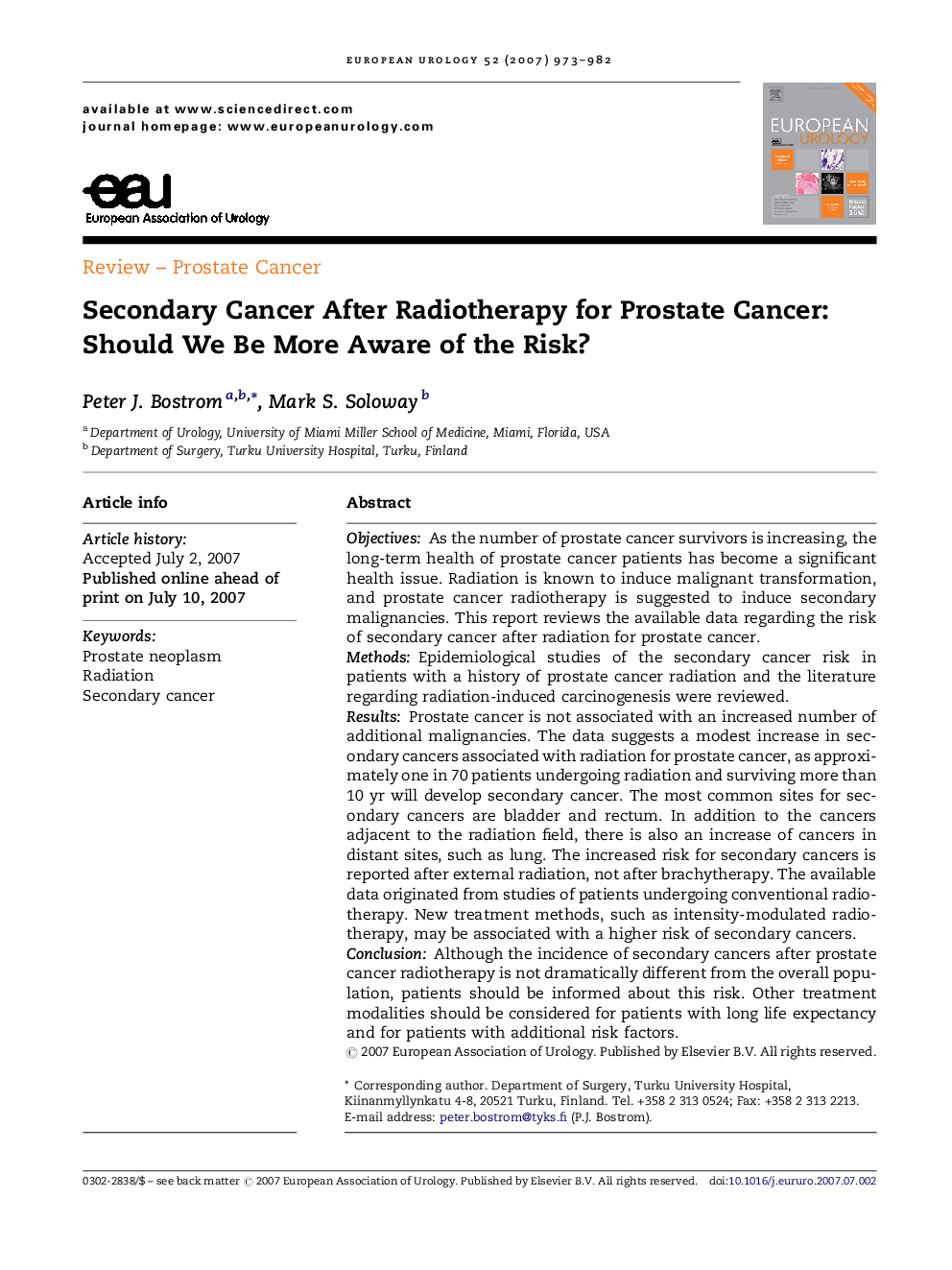| Article ID | Journal | Published Year | Pages | File Type |
|---|---|---|---|---|
| 3923330 | European Urology | 2007 | 10 Pages |
ObjectivesAs the number of prostate cancer survivors is increasing, the long-term health of prostate cancer patients has become a significant health issue. Radiation is known to induce malignant transformation, and prostate cancer radiotherapy is suggested to induce secondary malignancies. This report reviews the available data regarding the risk of secondary cancer after radiation for prostate cancer.MethodsEpidemiological studies of the secondary cancer risk in patients with a history of prostate cancer radiation and the literature regarding radiation-induced carcinogenesis were reviewed.ResultsProstate cancer is not associated with an increased number of additional malignancies. The data suggests a modest increase in secondary cancers associated with radiation for prostate cancer, as approximately one in 70 patients undergoing radiation and surviving more than 10 yr will develop secondary cancer. The most common sites for secondary cancers are bladder and rectum. In addition to the cancers adjacent to the radiation field, there is also an increase of cancers in distant sites, such as lung. The increased risk for secondary cancers is reported after external radiation, not after brachytherapy. The available data originated from studies of patients undergoing conventional radiotherapy. New treatment methods, such as intensity-modulated radiotherapy, may be associated with a higher risk of secondary cancers.ConclusionAlthough the incidence of secondary cancers after prostate cancer radiotherapy is not dramatically different from the overall population, patients should be informed about this risk. Other treatment modalities should be considered for patients with long life expectancy and for patients with additional risk factors.
